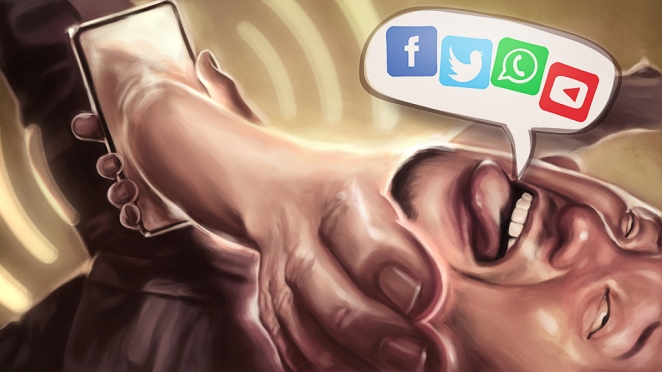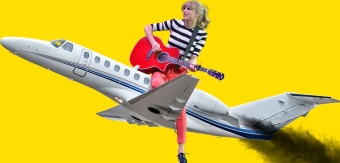The world of advertising has always stood on unstable ground, such is always evolving nature of the creative landscape. However, this year promises to be a particularly lively one, as the dynamics of technology, culture, and economics start to rearrange themselves around artificial intelligence.
With things moving so fast, predicting the future, even just six months down the line, requires a careful examination of current trends and emerging patterns and can’t possibly be set in stone. Indeed, I fully expect many of my predictions here to sound frankly ridiculous come July, but it wouldn’t be predictions month without a few predictions, right?
The Machines Will Rise
Artificial Intelligence (AI) and Machine Learning (ML) are not just buzzwords; they’re rapidly becoming central to the very fabric of adland. In the next six months, we can expect these technologies to be more deeply integrated into every aspect of the industry. AI algorithms will be more adept at analysing data, predicting trends, and personalising advertisements to a degree previously thought unattainable. While this will lead to more effective targeting and messaging, however, it could also lead to a massive brain drain in the creative industries.

Marc Posch
We’re already seeing it take root in more tech-forward sectors, with Microsoft recently laying off thousands of employees to ostensibly replace them with algorithms. Google, meanwhile, could layoff as many as 30,000 this year if reports are to be believed. So, what does this mean for agencies? In the next 6 months, probably not much but one report from Forrester Research claims as many as 33,000 ad agency jobs could be replaced by AI in the coming years. The partnership between WPP and Adobe struck last year doesn’t bode well either, at least on paper.
Voice and Conversational Marketing Will Start Making Sense
With the continuing proliferation of voice-activated devices like smart speakers and voice-enabled smartphones, voice marketing is set to take a more prominent role in the next 6 months, with the “voice commerce” market set to grow by almost $60 billion between now and 2026.
Advertisers will likely capitalise on this trend by creating more voice-optimized content, particularly for SEO purposes. As voice content becomes more popular, conversational marketing through chatbots and virtual assistants will also become more sophisticated, offering more personalized customer experiences that feel more ‘genuine’ and less manufactured. This could be used to create some really bold and interesting campaign activations, as chatbots become legitimate brand ambassadors.
A Shift Towards Ethical and Sustainable Advertising
Whereas we were once all more than happy to let brands and agencies have unfettered access to our data, we’re all so much more aware of it all now and, as such, advertising is on the rise. In the coming months, brands will need to focus more on transparent and ethical practices. This includes clear data usage policies and avoiding deceptive advertising tactics. Such a shift will not only comply with tightening regulations but will also build trust and loyalty and that’s never meant more than it does right now.

Joseph Wraith
Brands are increasingly expected to take stances on social and environmental issues too, with B Corp status now something most brands would happily trade a few thousands stock options for. This trend is likely to continue and even accelerate, as will campaigns and schemes that highlight commitments to sustainability, inclusivity, and social responsibility. These are all topics that resonate more with consumers, especially the younger demographics who value authenticity and ethics.
The Growing Importance of Video and Influencer Marketing
Short-form video content has been king for a while, and its reign is set to continue, particularly as TikTok continues to dominate as the social media platform of choice for younger consumers. This year we’ll undoubtedly see advertisers using this medium in more interesting and dynamic ways. A great recent example of the potential here is pasta brand Barilla, who used TikTok’s “Stitch” tool to latch on the most-loved pasta videos already on the platform and partner with food creators who 'stitched' brand new recipes from their leftovers onto the videos.
This also, of course, ties into the idea of influencer marketing, which will continue to evolve, with a shift towards micro-influencers who boast niche, highly engaged audiences likely to take root. SO many brands are recognising the value of partnering with these more authentic influencers with more targeted audience. In the next six months, expect more collaborations between brands and micro-influencers that are long-term and content-driven, rather than one-off sponsored posts. The fashion world has very much been a leading light here, with brands like ASOS and Boohoo offering bold micro-influencer incentives that really appear to be paying off, even with fast fashion’s increasingly controversial status.
The Impact of 5G Technology and Integration of Online and Offline Advertising
The rollout of 5G will significantly impact adland as faster internet speeds and reduced latency will allow for more complex and interactive ad formats, including high-quality video streaming and real-time personalisation. Given how tied we all our to our smartphones, the idea of practically infinite data anytime and anywhere is obviously quite enticing for advertisers wanting to expand their reach. It could, however, also result in a sort of advertising fatigue, as we feel like we’re never really allowed to “unplug”. Then again, if you felt that way I guess you could always just turn off data roaming.

Daniel Strange
On a similar level, the distinction between online and offline advertising will also continue to blur in 2024 as omnichannel marketing strategies that integrate both will become more prominent. Brands using data from offline behaviours to inform online advertising strategies (and vice versa) just makes sense and the consumers of today expect a seamless, cohesive experience, so why not give it to them?





Marc Posch February 4th, in the afternoon
Thanks for using one of my AI illustrations in your article. I'm excited.